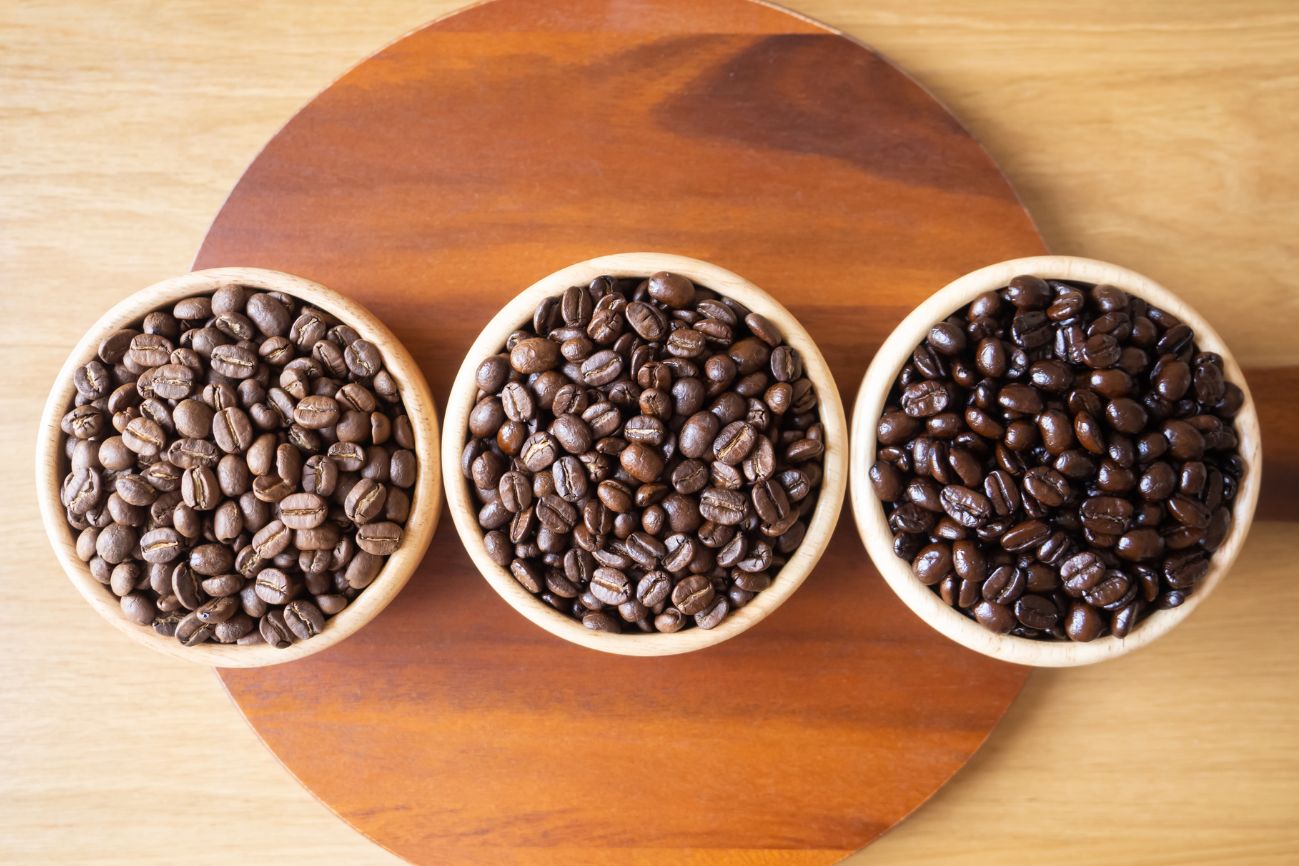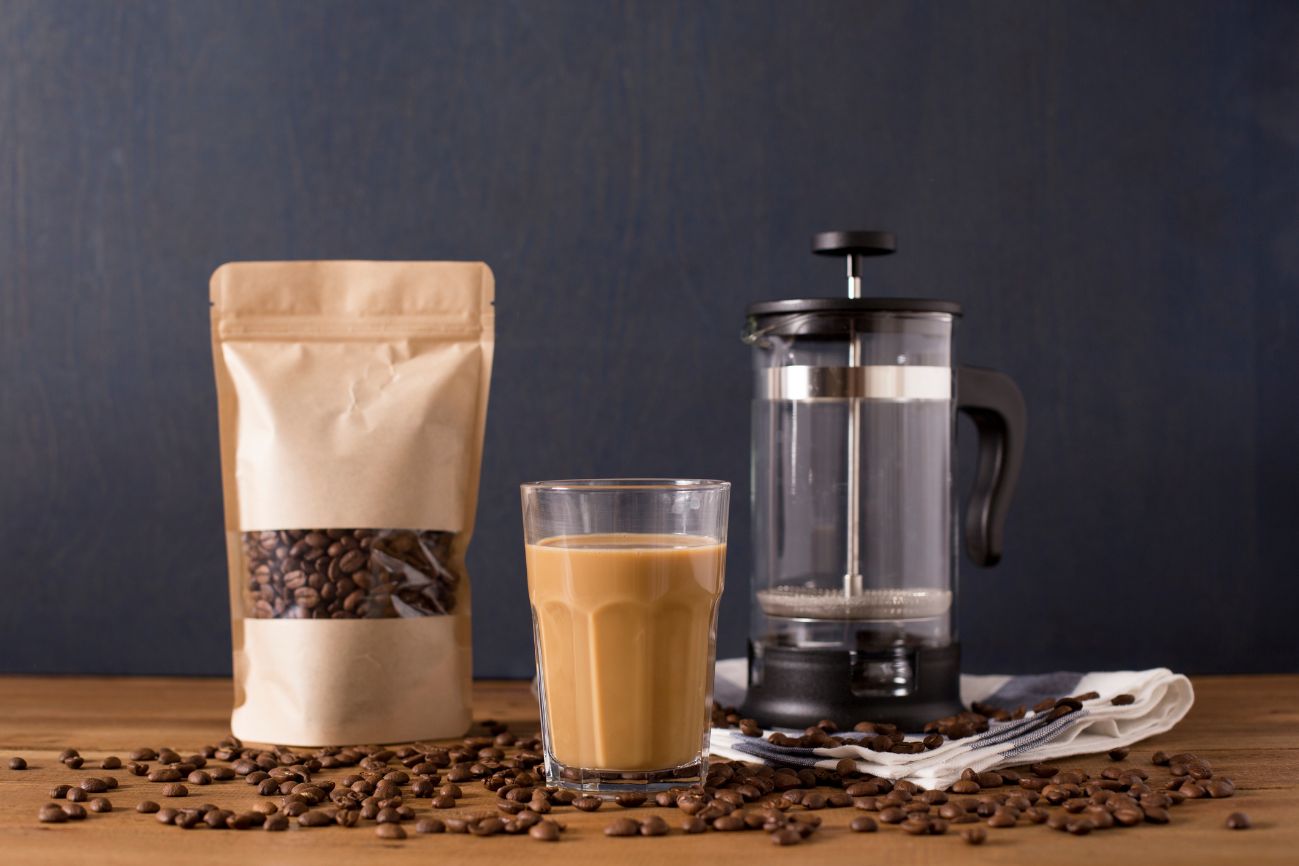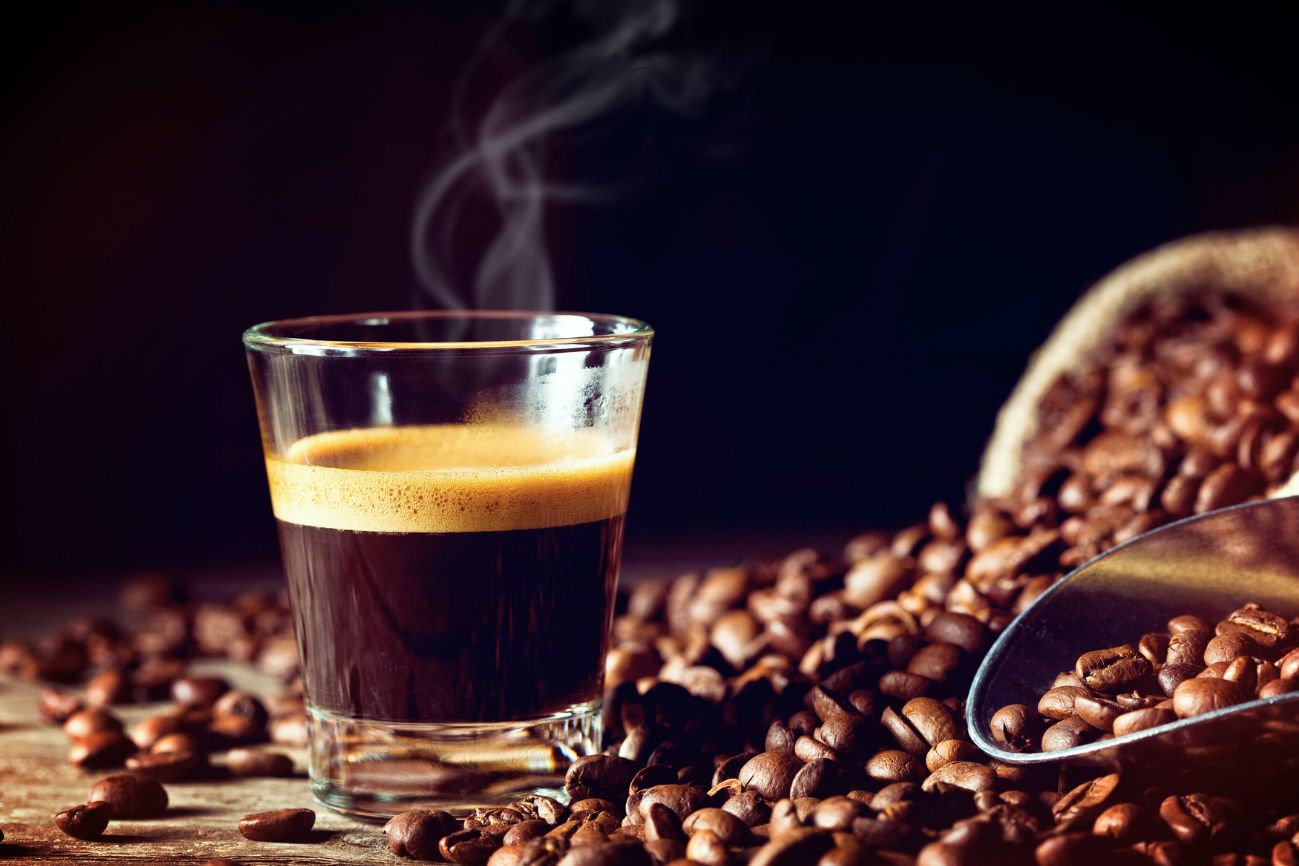Have you ever noticed that sometimes the espresso you purchase from one store tastes different from the one you get from another? You probably had a strong espresso at points, fruity and bright at others, and balanced at other times. If this happens to you and you are unsure of the reason, we will discuss the coffee roast guide here.
Coffee roasts may be the reason for the whole thing. Here we will discuss three main types of coffee roasts: light, medium, and dark. Light-medium and medium-dark roasts also exist, but we are only covering three main roast types here. You should understand the significance of coffee roast if you are a barista or even if you are a beginner. Here, we’ll conduct a coffee roast comparison and talk about how coffee roasts can change the flavor and taste of your coffee.
So Let’s discuss what is coffee roasting and how to choose the right coffee roast for you.
What is Roasting? Coffee Roast Guide
The natural color of the coffee beans is not chocolate. When farmers harvest them, they are green in color. After that, these beans are roasted over heat to create coffee and extract its flavors. When the green beans are roasted, their grassy scent transforms into a rich aroma with a variety of flavors. This is the way to roast them and bring out the best coffee flavors. Roasting changes the color and flavor of beans.
The beans are classified as light, medium, or dark roasts according to the temperature and roasting duration. Because of the temperature and roasting time, every roast has its characteristics.
The variations between light and dark medium roasts affect not only the coffee’s flavor but also its caffeine content and even how it reacts with milk or sweets.
While some claim that dark roast beans offer more health benefits, others believe that light roast beans have more health benefits. Like Michael Greger M.D. FACLM (Fellow of the American College of Lifestyle Medicine) has said in his post, “It appears some of the cholesterol-raising compounds are destroyed by roasting, so, in this case, darker is better.”
And Cecilia Snyder, MS, RD, said in his post, “Light and dark roast coffees each have nutritional pros and cons-Light roasts may be higher in healthy antioxidants and polyphenols, but they might also contain higher amounts of a harmful chemical called acrylamide.” (Medically reviewed by Kim Rose-Francis RDN, CDCES, LD).
But, I would like to have another post in the future only about the detailed health benefits based on roasting level. Every form of roast has advantages and a different caffeine concentration.
So, Let’s discuss roast types, and what is the difference between light, medium, and dark roast coffee caffeine and strength.
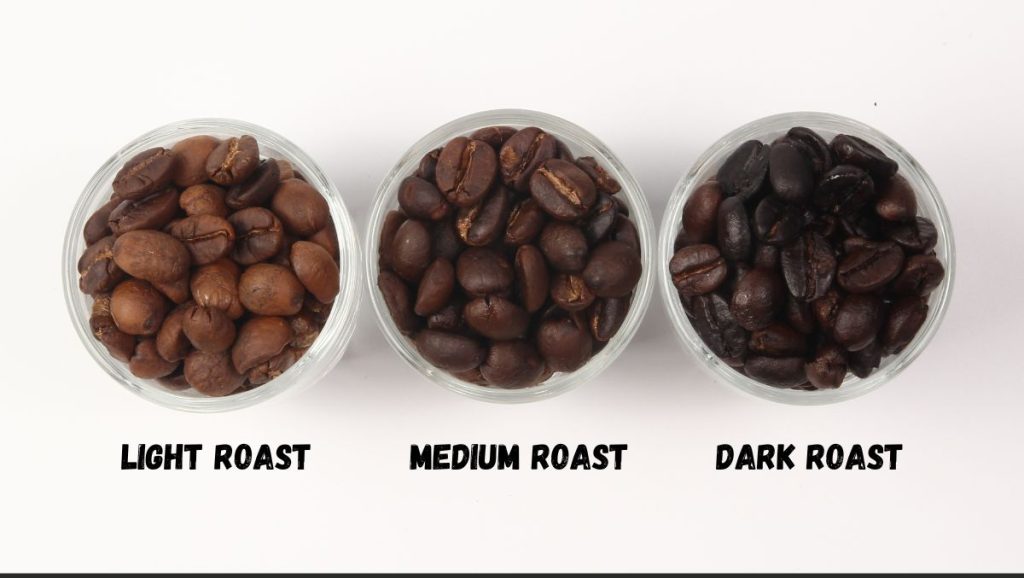
Light Roasted Coffee
Light-roasted beans have a lighter color since they are roasted for a shorter amount of time. Lightly roasted beans maintain their original flavor and caffeine content because they are roasted for a lesser amount of time.
Light-roasted beams, which are known for their fruity, vibrant, and rich flavors, come mainly from Ethiopia or Kenya. Light coffee beans are perfect if you want subtle and nuanced aromas.
Characteristics of Light Roast
- Flavor Profile: The taste of freshly light roasted coffee beans is Vibrant, acidic, and occasionally fruity. You can find citrus hints, flowery, or acidic scents. Just like the vineyard affects the flavor of wine, the coffee’s terroir is reflected in its taste.
- Color and Appearance: Coffee beans become light brown after just a little roasting period, changing the color from green to light brownish color. Because they are just roasted for a shorter amount of time, the light-roasted coffee beans don’t look shiny. Therefore, gentle roasting prevents them from producing their natural oil, which can give them an oily, and glossy appearance.
- Caffeine Content: When we just roast the beans for a shorter amount of time, the heat does not reduce their natural caffeine content. Light temperatures help beans retain their natural caffeine and their flavor.
- Aroma: Light roasting results in delicate, subtle beans that frequently have fruit or flower notes. The natural flavors of these beans remain preserved.
Who Should Choose Light Roast?
Light-roasted beans are definitely for you if you enjoy flavors that are fruity, floral, and citrus. Additionally, you should try these if you want to taste the various coffee flavors from various religions. It’s ideal for drip or pour-over methods of brewing that bring out the natural characteristics of the bean. However, if you like a more robust flavor, a light roast might not be your best option.
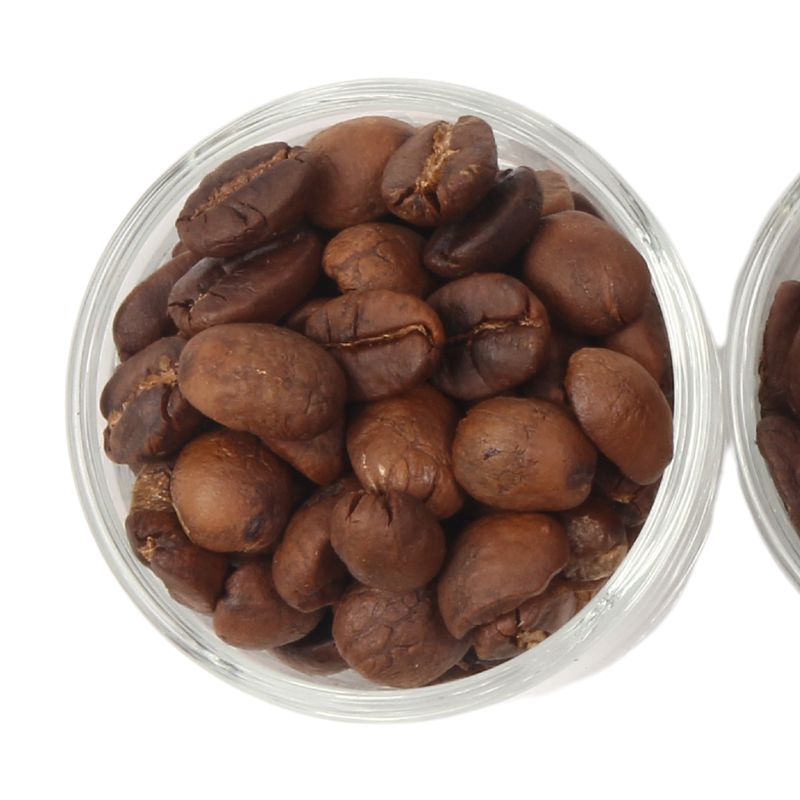
Medium Roasted Coffee
Compared to light roasts, medium-roasted beans are roasted for a longer period at a greater temperature. The natural sugar in the coffee beans is transformed into a caramelized form and flavor when they are roasted for a longer time than lightly roasted beans. You should try medium roast coffee from Colombia and Brazil, which achieves a balance between maintaining the original flavor of the bean and adding the toasty hints that come with roasting.
Characteristics of Medium Roast
- Flavor Profile: The most flavorful coffee is medium-roasted, and it can become your favorite. These beans have a smooth, balanced flavor with a hint of sweetness. Along with moderate acidity, you can enjoy delicious flavors like caramel, chocolate, and nuts.
- Color and Appearance: These beans have a milky chocolate brown color since they are roasted for a short to medium period of time. Additionally, these beans appear shiny but not oily because their surface contains just too little oil.
- Caffeine Content: Medium-roasted beans may have a little lower caffeine content than light-roasted ones. However, these beans still have a higher energy boost and a good amount of caffeine.
- Aroma: Medium roast may be perfect for you if you enjoy a warm, inviting aroma with a stronger scent and hints of cocoa or spice.
Who Should Choose Medium Roast?
This is definitely for you if you love coffee but want a well-balanced cup that isn’t overly heavy or acidic, with a nice mix of sweetness, nuttiness, and notes of caramel or chocolate. Drip coffee makers, cold brews, French presses, and even espresso machines are among the many brewing methods that it works well with. A good place to start if you’re not sure what kind of coffee you like is with a medium roast.
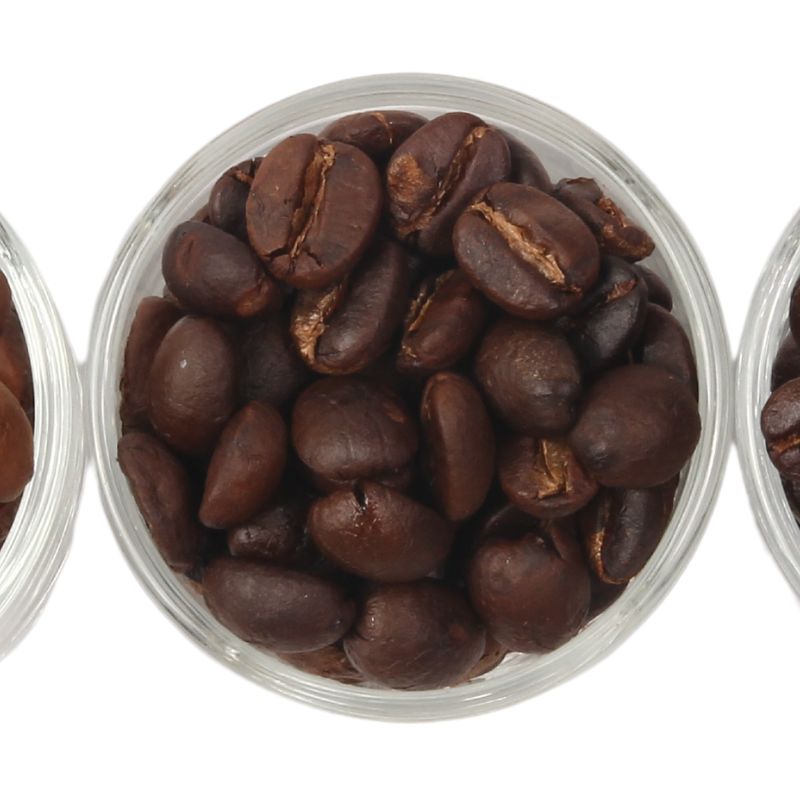
Dark Roasted Coffee
This is the final roast type, which is stronger and bolder than the others. The coffee beans are roasted at a high temperature for a longer time in a dark roast. They appear darker the longer they are roasted. Dark roasts are perfect for those who want strong coffee because of their rich, robust, and smokey Flavors. So, let’s talk about it.
Characteristics of Dark Roast
- Flavor Profile: The sugar in the coffee beans caramelizes and gives strong, bold, and smoky flavors when they are roasted at a higher temperature for a longer amount of time. These beans have strong, smoky, and even bitter flavors and are less acidic than the others. And their common flavors include a touch of spice, chocolate, and toasted almonds.
- Color and Appearance: The beans turn dark brown and black when they are roasted for a longer period than other beans. When we roast them at a higher temperature for longer periods, their natural oils come to the surface. These roasts seem oily, shiny, and dark.
- Caffeine Content: Coffee beans lose some of their natural caffeine content when we roast them at a higher temperature for a longer time. Light and medium roasts contain more caffeine content than dark roasts, but the dark coffee roasts are bolder and stronger.
- Aroma: Dark roasted beans have a rich and powerful aroma, with earthy or roasted notes.
Who Should Choose Dark Roast?
If you love strong coffee with a bold flavor, dark roast is your go-to. It pairs beautifully with milk or cream, making it ideal for lattes and cappuccinos. Fans of French press or espresso brewing also tend to enjoy dark roasts for their full-bodied and rich experience.
some people ask this question that “Why dark roast coffee is bad?”. The answer is that dark coffee is not bad, even though it might not taste the way you want it to. Therefore, you can try light and medium-roasted coffee if you don’t like it.
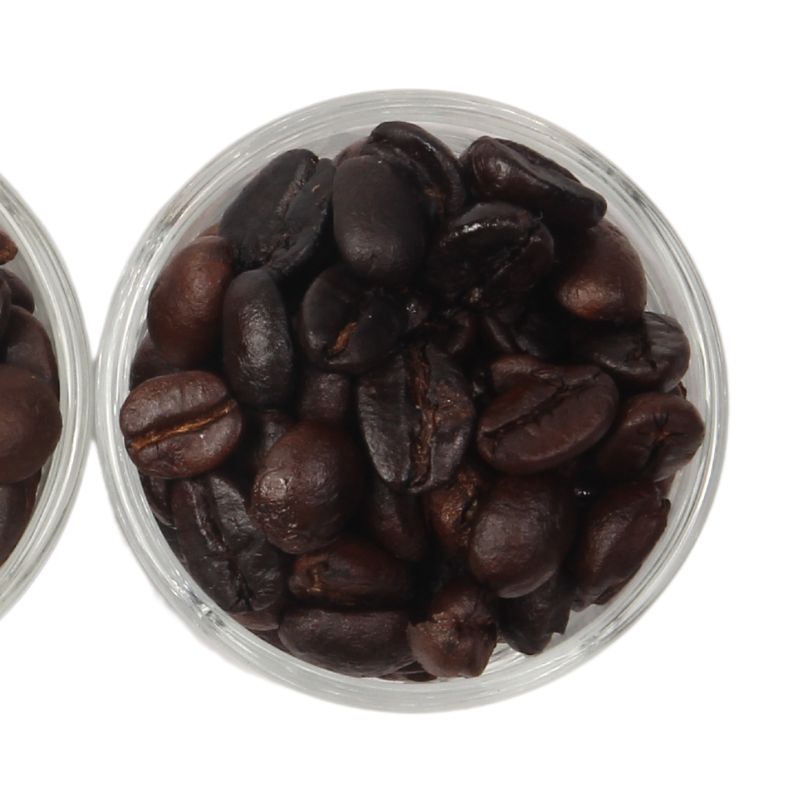
Light Roast VS Medium Roast VS Dark Roast
| Characteristics | Light Roast | Medium Roast | Dark Roast |
| Flavor | Bright, Fruity, Floral | Balanced, Sweet, Nutty | Bold, Smoky, Strong |
| Aroma | Subtle, Delicate | Warm, Inviting | Rich, Intense |
| Color | Light Brown | Chocolate Brown | Dark Brown or Black |
| Caffeine | Highest | Moderate | Slightly Lower |
| Appearance | No oil | Minimum oil | Shiny and oily |
Tips For Choosing the Best Coffee Roast For Beginners
Here are some tips we’ve discussed to help you get the best coffee roast. Simply follow these steps to achieve the best taste that suits your taste buds.
1. Consider Your Taste Preferences
- Do you enjoy bright, fruity flavors? Go for a light roast.
- Prefer a balance of sweetness and body? Medium roast is your friend.
- Love bold, intense flavors? Dark roast is the way to go.
2. Think About Your Brewing Method
- Light roasts shine in pour-over, cold brew, and drip coffee makers.
- Medium roasts are versatile and work well with French press, drip, and espresso machines.
- Dark roasts excel in espresso machines and French presses, especially for milk-based drinks.
3. Experiment with Single-Origin and blended
Single-origin coffees let you explore the unique characteristics of beans from a specific region, while blends offer a harmonious mix of flavors. Try both across different roast levels to discover what you love.
4. Pair Coffee with Food
- Light roasts pair well with citrusy or fruity desserts.
- Medium roasts complement pastries and chocolate-based treats.
- Dark roasts are perfect with rich, creamy desserts or savory dishes.
Your Coffee, Your Choice
Choosing the right coffee roast is a personal journey that depends on your taste preferences, brewing style, and the experience you seek from your cup. Whether you’re drawn to the nuanced flavors of light roasts, the balanced flavors of medium roasts, or the bold intensity of dark roasts, there’s a perfect roast waiting for you.
With the help of this guide, you can quickly find the perfect taste for you. To better understand your taste, I suggest you to try all of those roasts. After tasting each roasted flavor, you will have a proper understanding of how they taste.
To get the greatest flavor for yourself, let’s set aside all of the roasts and start tasting each one separately.

